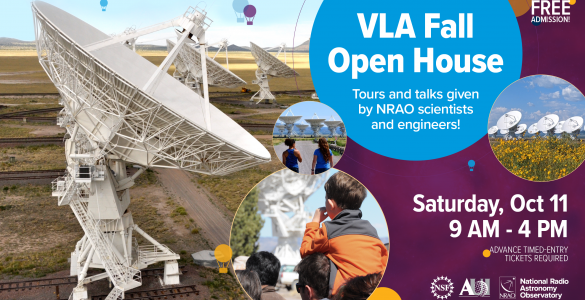Astronomers using the millimeter-wave region of the radio spectrum have won crucial protection for their science.
Dedicated allocations for radio astronomy have been given final approval by the 2,500 delegates to the World Radiocommunication Conference (WRC-00), which recently concluded a month of deliberations in Istanbul, Turkey. Radio services can transmit in these parts of the spectrum as long as they don’t hinder astronomers’ attempts to catch faint signals from the cosmos.
The new allocations represent the culmination of more than three years of cooperative planning by radio astronomers in many countries.
Millimeter waves — high-frequency radio waves — have come of age as an astronomical tool in the last ten years. They are one of the last technological frontiers for astronomers.
WRC-00 has protected for science all the frequencies between 71 and 275 Gigahertz (GHz) that radio astronomers currently use, adding more than 90 GHz of spectrum to the 44 GHz already set aside in this frequency range.
As a result, radio astronomy is now allocated most of the frequencies between 71 and 275 GHz that can get through the Earth’s atmosphere. “We have formal access to all three atmospheric ‘windows’, apart from their very edges,” said Dr. Tom Gergely of the National Science Foundation, one of the U.S. delegates to WRC-00.
The WRC also changed most of the frequencies allocated to satellite downlinks within the 71-275 GHz range to frequencies not used for science. Since no satellites yet operate at these high frequencies, no equipment needs to be altered.
“Commercial technologies are just starting to develop above 50 GHz,” said Dr. Klaus Ruf, Chairman of the Inter-Union Commission for the Allocation of Frequencies. “The WRC’s actions mean that, when they are, radio astronomers should be able to share this part of the spectrum with most terrestrial services.”
The World Radiocommunication Conference is held every two or three years. Here member countries of the International Telecommunication Union meet to painstakingly parcel out the radio frequency spectrum between radio-based applications such as personal communications, satellite broadcasting, GPS and amateur radio, and the sciences of radio astronomy, earth exploration and deep space research. The WRC also coordinates sharing between services in the same radio bands.
WRC decisions are incorporated into the Radio Regulations that govern radio services worldwide.
The new spectrum allocations for radio astronomy are the first since 1979. Millimeter-wave astronomy was then in its infancy and many of its needs were not yet known. As astronomers began to explore this region of the spectrum they found spectral lines from many interesting molecules in space. Many of those lines had not fallen into the areas originally set aside for astronomy, but most will be under the new allocations.
“It’s a win for millimeter-wave science,” said Dr. John Whiteoak of the Australia Telescope National Facility, Australian delegate to WRC-00. “This secures its future.”
The protection is a significant step for both existing millimeter-wave telescopes and new ones such as the Atacama Large Millimeter Array (ALMA) now being planned by a U.S.-European consortium.
Even at its isolated site in Chile’s Atacama desert, ALMA would be vulnerable to interference from satellite emissions. Sensitive radio astronomy receivers are blinded by these emissions, just as an optical telescope would be by a searchlight.
“There is more energy at millimeter and sub-millimeter wavelengths washing through the Universe than there is of light or any other kind of radiation,” said ALMA Project Scientist, Dr. Al Wootten of the National Radio Astronomy Observatory. “Imaging the sources of this energy can tell us a great deal about the formation of stars and galaxies, and even planets.”
“But the Earth’s atmosphere isn’t very kind to us – it has only a few windows at these frequencies, and not very transparent ones at that. They are easily clogged up. It’s very important that we keep them as free as possible from interference.”
The new spectrum allocations were welcomed by Dr Johannes Andersen, General Secretary of the International Astronomical Union, which represents astronomers worldwide.
“Protecting our ability to observe the Universe is the top priority for the International Astronomical Union,” he said.
“This action shows that international bodies accept the need for environmental emission standards in space as well as on Earth, for the benefit of all.”
The National Radio Astronomy Observatory is a facility of the National Science Foundation, operated under cooperative agreement by Associated Universities, Inc.
Contact:
Helen Sim, Public Information Officer
(804) 296-0268
hsim@nrao.edu











